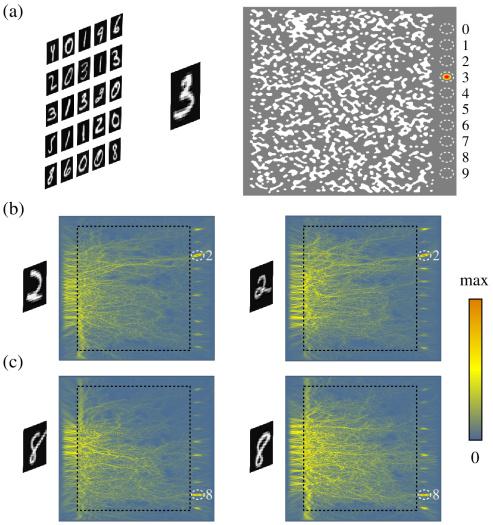A couple of years ago I wrote a post about how the ubiquitous machine learning metaphor of brain cells was somewhat misleading and definitely unhelpful. If I explain A by saying it’s like B, but you really have no idea about B, then that must be a worse explanation than not mentioning B. And I know that you do not know how brain cells really work because I know that nobody knows how brain cells really work. I therefore proposed trying to think of other metaphors or aids to understanding what is going on.
My idea was a physical model that people with a mechanical aptitude might like. I do realize that it might be too difficult to imagine my impractical physical models actually doing the job. I have just come across another way of thinking about machine learning networks that is more similar to what I describe than traditional Von Neumann computers chiselling away at tensor bits.
This interesting physical system involves light. By shining a light into a very specially prepared nanophotonic structure, it can get diverted and bent such that the input patterns can converge on a classification. Here’s a paper that talks about classifying numbers in this way: Nanophotonic media for artificial neural inference (Erfan Khoram, Ang Chen, Dianjing Liu, Lei Ying, Qiqi Wang, Ming Yuan, and Zongfu Yu).
This is the classic (MNIST) task that started a lot of modern interest in machine learning
The handwritten number to identify is encoded into light waves, conceivably just as it is when you read numbers with your eyes, and after those light waves go through the system, they emerge concentrated on a particular output position corresponding to a class of number, e.g. the number four. In this way, handwritten numbers which are not exactly all alike can be separated into which particular digit they’re supposed to represent. This video nicely illustrates the system and here is a helpful image from the paper.

That’s what I call very OCR!
This concept is interesting because it shows that the principles behind modern neural networks do not need to be realized only on computers. Once the machine learning has happened and training is complete, as with my hypothetical mechanical system, there need not be any more computer computation at all. Indeed I suspect a lot of clever things in biology just happen, tumbling forward through various situations, based on such previous training. That training is evolution.
In case the point of why this is interesting is not clear, let me give a hypothetical example that would make perfect sense in a science fiction novel. Currently we have light sensors that, for example, know it is night time and that we would like the driveway light to turn on. Although that is useful enough to be a product people want, it is as simple as such a system can be. Imagine instead a light detector that recognized your face (and not the faces of other people) and triggered the garage door to open. When light from the scene bounces into this system in the same way it would bounce into your eyes, the light is directed to a simple photoresistor controlling the door based on the very sophisticated ability to filter your face out of everyone else’s. Keep in mind that would take zero computational energy to do this rather clever trick.
It is nothing less than a way to give inanimate objects eternal intelligence.
I think the possibilities are quite fascinating. I expect that there will be different kinds of stock modules (e.g. nonlinearity, pooling, etc.) allowing one to compose interesting neural nets with a minimum of custom fabrication. I can imagine these kinds of systems being especially effective in aggregation, like a fly’s compound eye. I suspect that there will arise an entire field of computer science that simulates and organizes these kinds of systems. I certainly will be thinking about the concept’s potential. I wonder what other substrates "neural" networks can be encoded into. Hydraulic? Check out the fascinating MONIAC. Radio waves? RFIDs are already interesting, but I’m thinking of using the wave mechanics. Sounds could also work to create an intelligent ear. I think it should also be possible to computer cut/etch steel or other metal to make an intelligent system out of harmonic resonances. A lot of interesting potential.
It is also interesting to consider the philosophical perspective of something like a block of glass that can make intelligent decisions. Is there ever a level where it deserves "human" rights? Will there arise People for the Ethical Treatment of Intelligent Rocks?